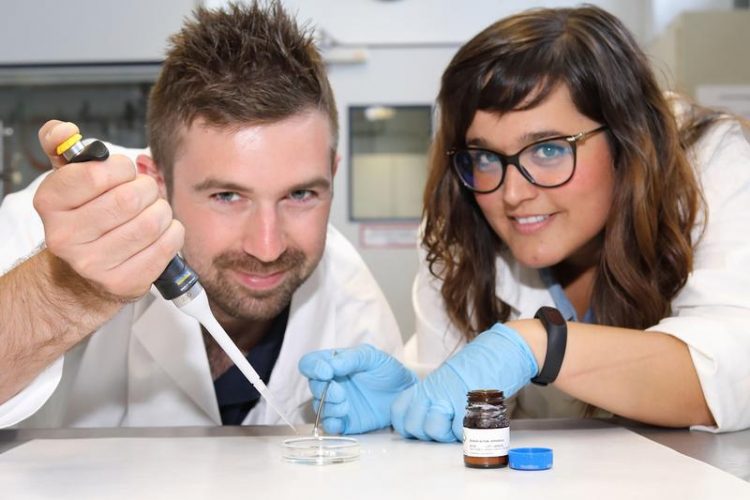O2 stable hydrogenases for applications

Dr. James Birrell & Dr. Patricia Rodríguez Maciá MPI CEC
A team of researchers from the Max Planck Institute for Chemical Energy Conversion and the MPI für Kohlenforschung in Mülheim an der Ruhr have succeeded in optimizing naturally occurring catalysts (hydrogenases) for application.
Hydrogen as an energy vector. Hydrogen gas (H2) has been proposed as an ideal energy vector. It can be produced from water, ideally using renewable energy sources and using an efficient catalyst to split water into H2 and oxygen (O2).
The H2 produced can then be stored as a fuel and consumed in a fuel cell to produce electricity on demand generating harmless water as a waste product. This technology is already available and can reach high efficiencies. Unfortunately, the catalysts required are based on rare and expensive metals like platinum.
Bio-hydrogen. Nature also employs H2 as a fuel, but instead of using precious metals, living organisms utilize enzymes as catalysts, and the catalyst of choice for H2 cycling are the hydrogenases. The active center of these enzymes contains earth-abundant metals like nickel and/or iron and can operate as efficiently as platinum. However, hydrogenases are very sensitive to oxygen and cannot be handled under air, complicating manipulation of them and therefore limiting their use in technological applications.
Producing “easy-to-handle” hydrogenases. Very recently, a team from the Mülheim-based Max Planck Institutes (Mülheim Chemistry Campus) have discovered a way to protect these sensitive enzymes from oxygen damage. Treating the purified hydrogenase with strong oxidizing agents in the presence of sulfide converted it to an oxygen stable form.
Spectroscopic and electrochemical methods were used to characterize the oxygen-stable state obtained. The oxygen stable enzyme can then be stored and handled under air making it easy to employ in fuel cells or water splitting devices. This research provides a step forward towards the use of these enzymes in technological applications as well as in understanding the mechanism of inactivation by oxygen. It also provides clues for protecting synthetic molecular catalysts designed for hydrogen conversion and production.
Funding
The work was supported by the Max Planck Society and the Cluster of Excellence RESOLV (EXC1069) from the Deutsche Forschungsgemeinschaft (DFG).
Original publication
Patricia Rodríguez-Maciá, Edward J. Reijerse, Maurice van Gastel, Serena DeBeer, Wolfgang Lubitz, Olaf Rüdiger, and James A. Birrell. Sulfide Protects [FeFe] Hydrogenases From O2 J. Am. Chem. Soc. (Just Accepted Manuscript) DOI: 10.1021/jacs.8b04339
Dr. James Birrell
Max Planck Institute for Chemical Energy Conversion
Phone: +49-(0)208-306-3586
Email: james.birrell@cec.mpg.de
Media Contact
All latest news from the category: Life Sciences and Chemistry
Articles and reports from the Life Sciences and chemistry area deal with applied and basic research into modern biology, chemistry and human medicine.
Valuable information can be found on a range of life sciences fields including bacteriology, biochemistry, bionics, bioinformatics, biophysics, biotechnology, genetics, geobotany, human biology, marine biology, microbiology, molecular biology, cellular biology, zoology, bioinorganic chemistry, microchemistry and environmental chemistry.
Newest articles

NASA: Mystery of life’s handedness deepens
The mystery of why life uses molecules with specific orientations has deepened with a NASA-funded discovery that RNA — a key molecule thought to have potentially held the instructions for…

What are the effects of historic lithium mining on water quality?
Study reveals low levels of common contaminants but high levels of other elements in waters associated with an abandoned lithium mine. Lithium ore and mining waste from a historic lithium…

Quantum-inspired design boosts efficiency of heat-to-electricity conversion
Rice engineers take unconventional route to improving thermophotovoltaic systems. Researchers at Rice University have found a new way to improve a key element of thermophotovoltaic (TPV) systems, which convert heat…



